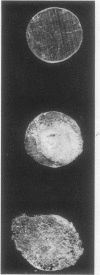Abstract
Corynebacterium group D2 inoculated into normal human urine formed struvite crystals and an increase in pH and ammonium concentration after 24 h of incubation. Zinc disks dipped into a broth culture of this microorganism and inserted into the bladders of rats produced stones with a mean weight of 12.5 mg (ranging from 1 to 57.7 mg) after 12 days. Analysis of the infrared spectrum determined the stones to be composed of struvite. From these results its seems that stone formation by Corynebacterium group D2 may be possible both in vitro and in vivo, which may confirm a previous report involving these bacteria in human clinical encrusted cystitis.
Full text
PDF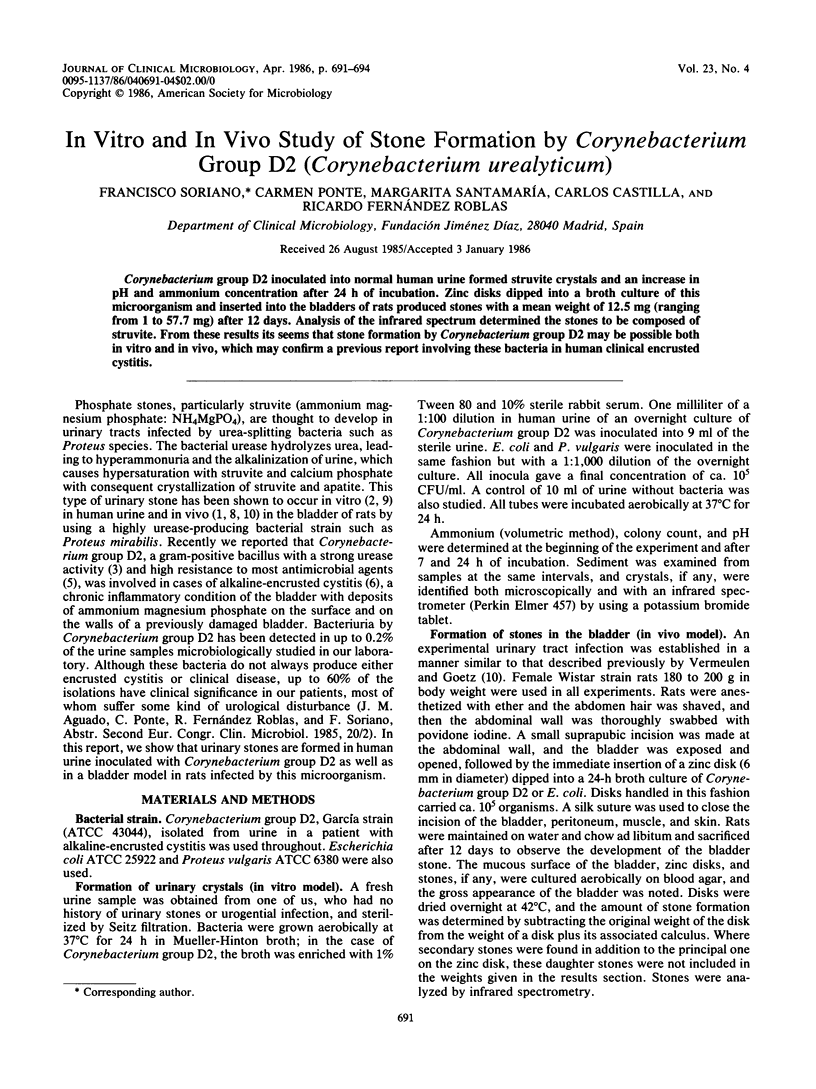
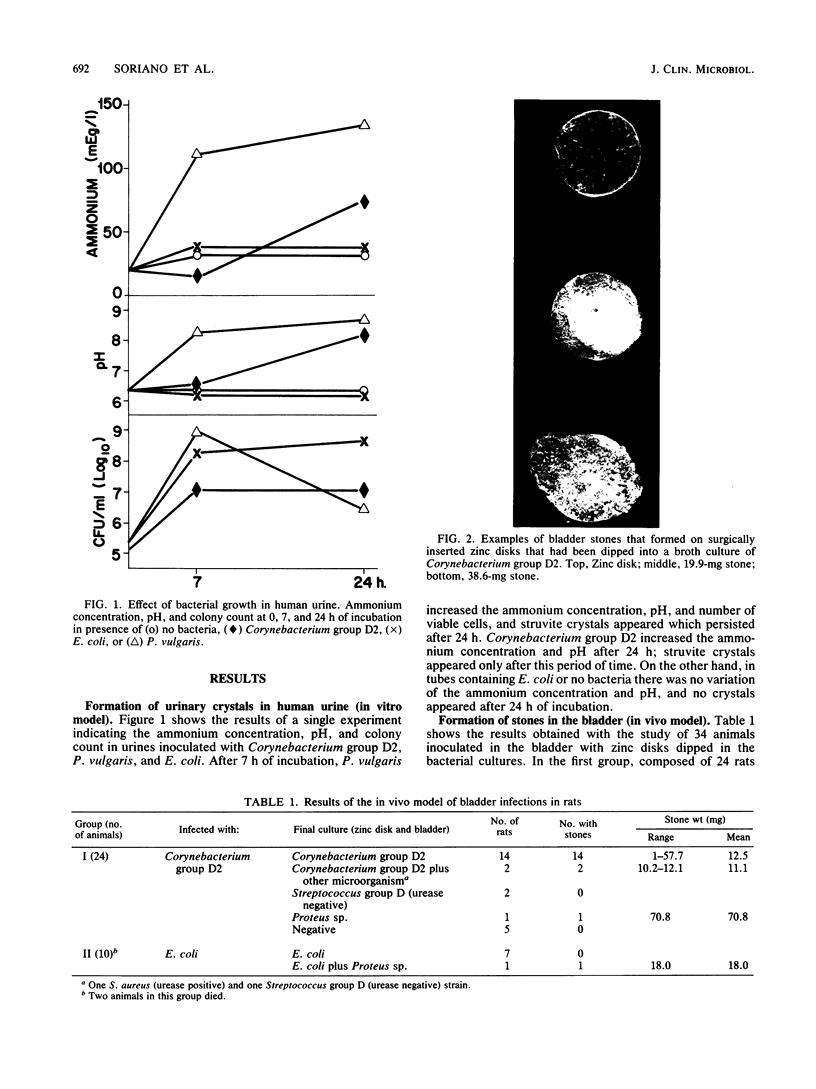
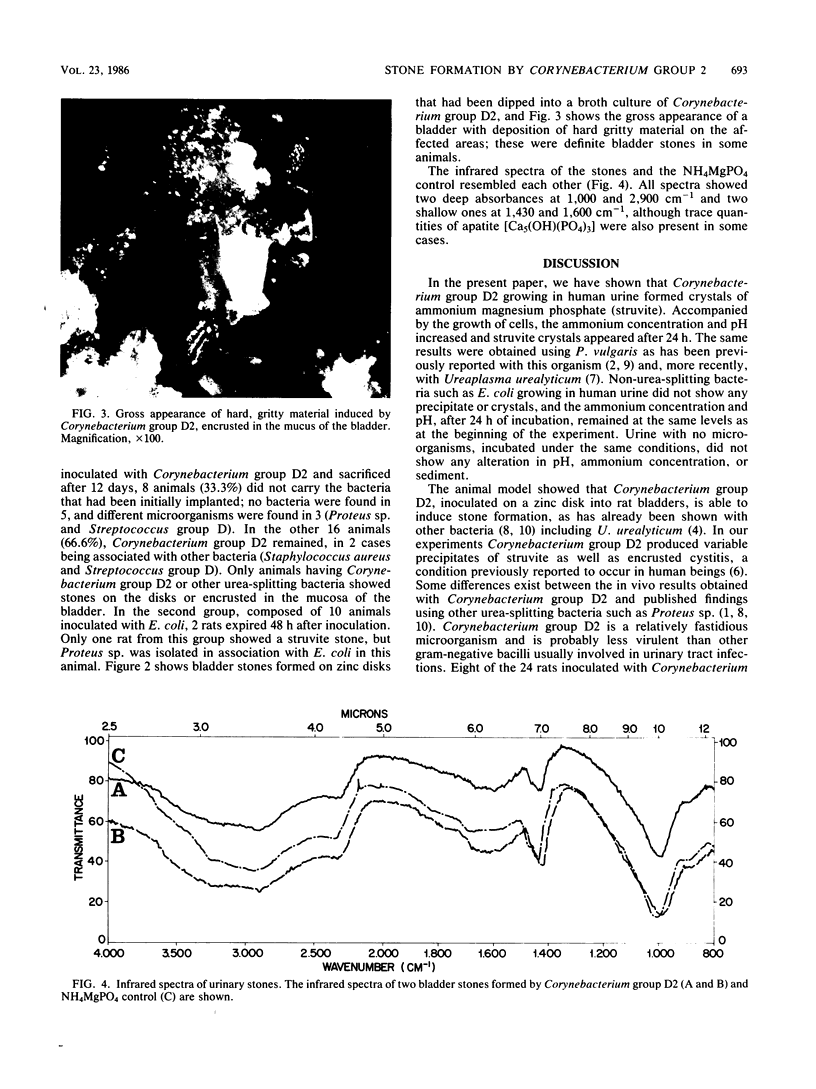
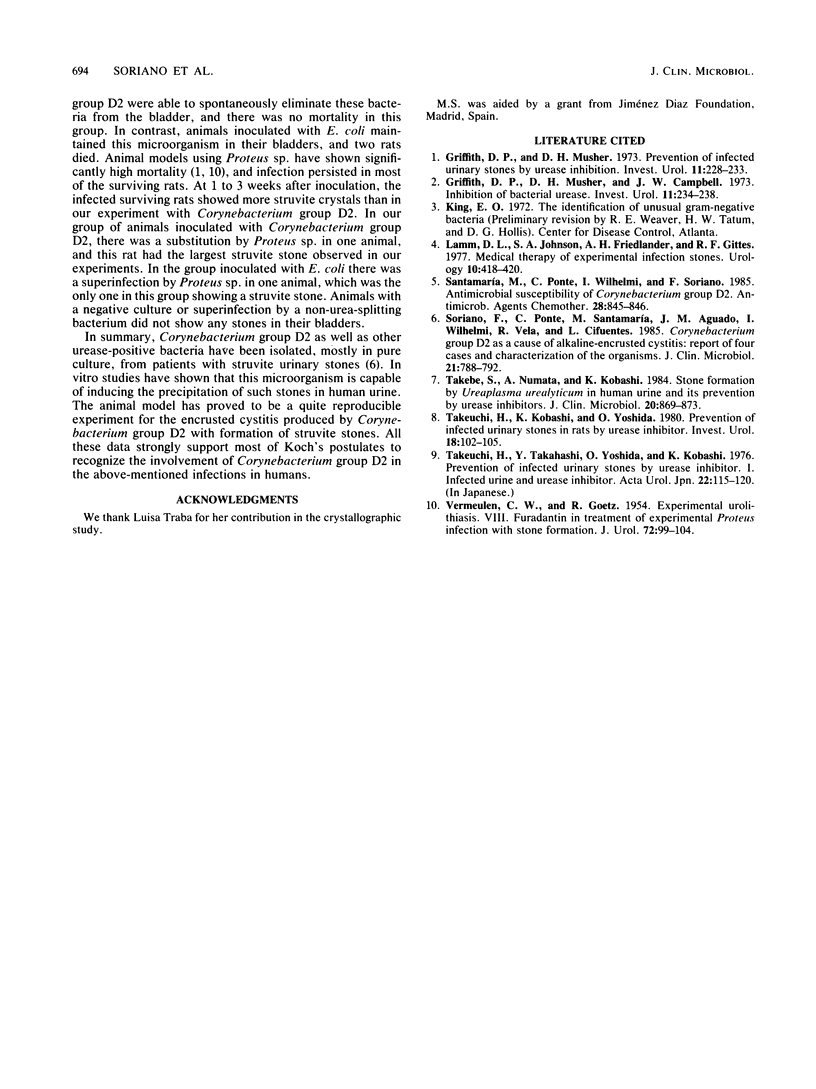
Images in this article
Selected References
These references are in PubMed. This may not be the complete list of references from this article.
- Griffith D. P., Musher D. M., Campbell J. W. Inhibition of bacterial urease. Invest Urol. 1973 Nov;11(3):234–238. [PubMed] [Google Scholar]
- Griffith D. P., Musher D. M. Prevention of infected urinary stones by urease inhibition. Invest Urol. 1973 Nov;11(3):228–233. [PubMed] [Google Scholar]
- Lamm D. L., Johnson S. A., Friedlander A. M., Gittes R. F. Medical therapy of experimental infection stones. Urology. 1977 Nov;10(5):418–421. doi: 10.1016/0090-4295(77)90125-x. [DOI] [PubMed] [Google Scholar]
- Santamaría M., Ponte C., Wilhelmi I., Soriano F. Antimicrobial susceptibility of Corynebacterium group D2. Antimicrob Agents Chemother. 1985 Dec;28(6):845–846. doi: 10.1128/aac.28.6.845. [DOI] [PMC free article] [PubMed] [Google Scholar]
- Soriano F., Ponte C., Santamaria M., Aguado J. M., Wilhelmi I., Vela R., Delatte L. C. Corynebacterium group D2 as a cause of alkaline-encrusted cystitis: report of four cases and characterization of the organisms. J Clin Microbiol. 1985 May;21(5):788–792. doi: 10.1128/jcm.21.5.788-792.1985. [DOI] [PMC free article] [PubMed] [Google Scholar]
- Takebe S., Numata A., Kobashi K. Stone formation by Ureaplasma urealyticum in human urine and its prevention by urease inhibitors. J Clin Microbiol. 1984 Nov;20(5):869–873. doi: 10.1128/jcm.20.5.869-873.1984. [DOI] [PMC free article] [PubMed] [Google Scholar]
- Takeuchi H., Kobashi K., Yoshida O. Prevention of infected urinary stones in rats by urease inhibitor: a new hydroxamic acid derivative. Invest Urol. 1980 Sep;18(2):102–105. [PubMed] [Google Scholar]
- VERMEULEN C. W., GOETZ R. Experimental urolithiasis. VIII. Furadantin in treatment of experimental proteus infection with stone formation. J Urol. 1954 Aug;72(2):99–104. [PubMed] [Google Scholar]



